The U.S. Navy has provided what appears to be the first look at a new underwater drone called Yellow Moray that can be launched and recovered via a standard submarine torpedo tube. The uncrewed system recently completed its first end-to-end test. The service hopes to begin fielding this capability next year, which will give all of its submarines an additional tool for scouting for mines and other hazards, gathering intelligence, and otherwise improving their situational awareness.
The end-to-end Yellow Moray test took place last week, according to a Facebook post from the Navy’s Submarine Readiness Squadron 32. The Virginia class attack submarine USS Delaware (SSN 791) served as the launch and recovery platform for the uncrewed underwater vehicle (UUV).
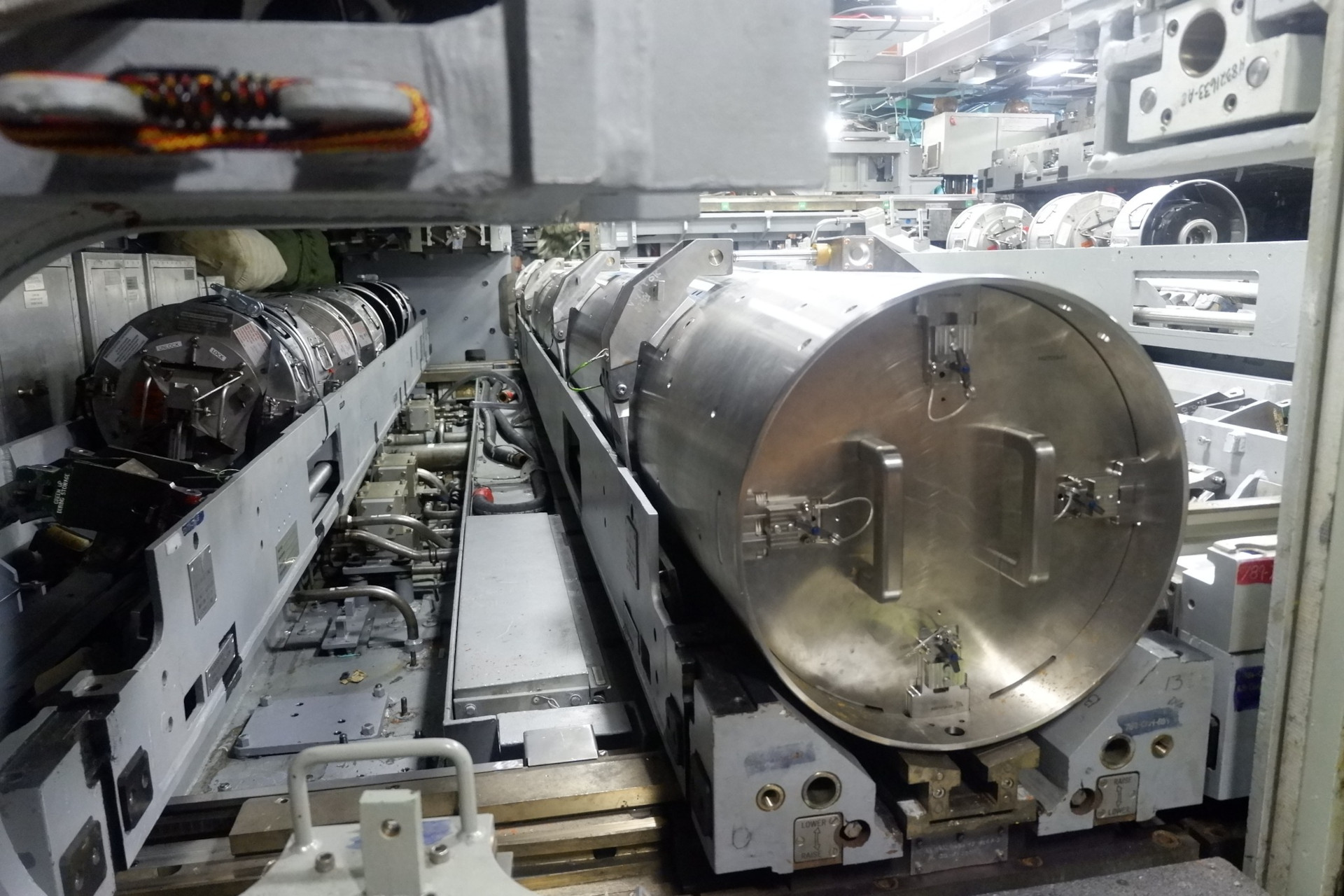
The Oceanographic Systems Lab at the Woods Hole Oceanographic Institution, the Undersea Warfare Platforms and Payload Integration Department (Code 45) of Naval Undersea Warfare Center Division Newport (NUWC Newport), Submarine Forces Atlantic, Unmanned Undersea Vehicles Squadron One’s (UUVRON-1) Flotilla One, and the crews of the Virginia class submarines USS Indiana (SSN 789) and USS Oregon (SSN 793), also supported the test. Members of Huntington Ingalls Industries’ (HII) Unmanned Systems division, the UUV’s current prime contractor, were also participants.
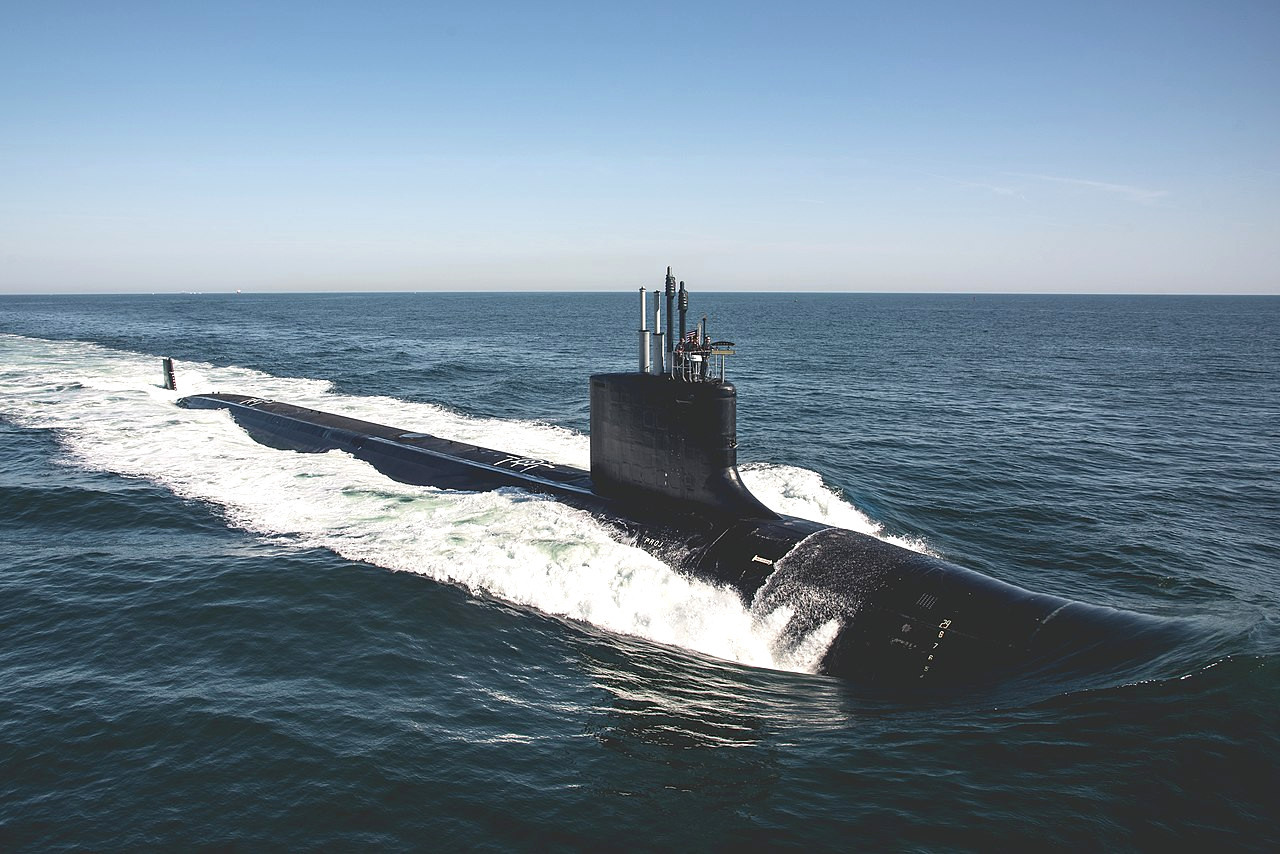
Specific details about Yellow Moray are limited, but it is known to be a member of HII’s REMUS series. The Navy has also talked in the past about the development of a subvariant or derivative of the Razorback UUV that can be launched and recovered via torpedo tube. Razorback is a version of the REMUS 600, which was originally developed by Woods Hole’s Oceanographic Systems Lab and was then initially produced by a company called Hydroid.

Another configuration of the REMUS 600, known as the Mk 18 Mod 2 Kingfish, is also in Navy service. The Navy uses Razorbacks and Kingfish, which carry different mixes of sonars, camera systems, and other sensors, to conduct various missions, including mine-hunting, underwater mapping, and other kinds of intelligence gathering.
The standard REMUS 600, which has a torpedo-like shape, is around 10.6 feet long, 12.75 inches in diameter, and weighs 530 pounds. The battery-powered UUV can operate down to depths of 600 feet and is capable of semi-autonomous operation along a pre-defined route.
REMUS 600 has a stated endurance of up to 70 hours, but this is dependent on the exact configuration of the underwater drone and environmental factors. “The vehicle is capable of conducting operations for about 24 hours using an alkaline battery as its energy source,” an article in the Spring 2019 edition of Undersea Warfare, the official magazine of the Navy’s submarine forces, said about the REMUS 600’s capabilities at that time.
All known versions of the REMUS 600 to date feature an antenna mast at the rear that allows the UUV to communicate while running close to the surface. Wireless Ethernet and Iridium satellite communications links are among the specific options for connecting these underwater drones to offboard platforms, such as ships and shore-based control nodes.

The standard REMUS 600 is notably shorter, narrower, and lighter than the Navy’s Mk 48 heavyweight torpedo, the standard torpedo armament for the service’s submarines. Pictures that Submarine Readiness Squadron 32 shared of Yellow Moray show that it is narrower than a standard torpedo tube and also comes packaged in a straight-walled tubular canister. This could indicate that the fixed antenna mast found on other REMUS 600 variants has been deleted (which could have been replaced by a retractable mast or some other mounting arrangement) on the submarine-launched and recovered derivative. This all may also point to other differences in the external shape of the Yellow Moray and the REMUS 600.
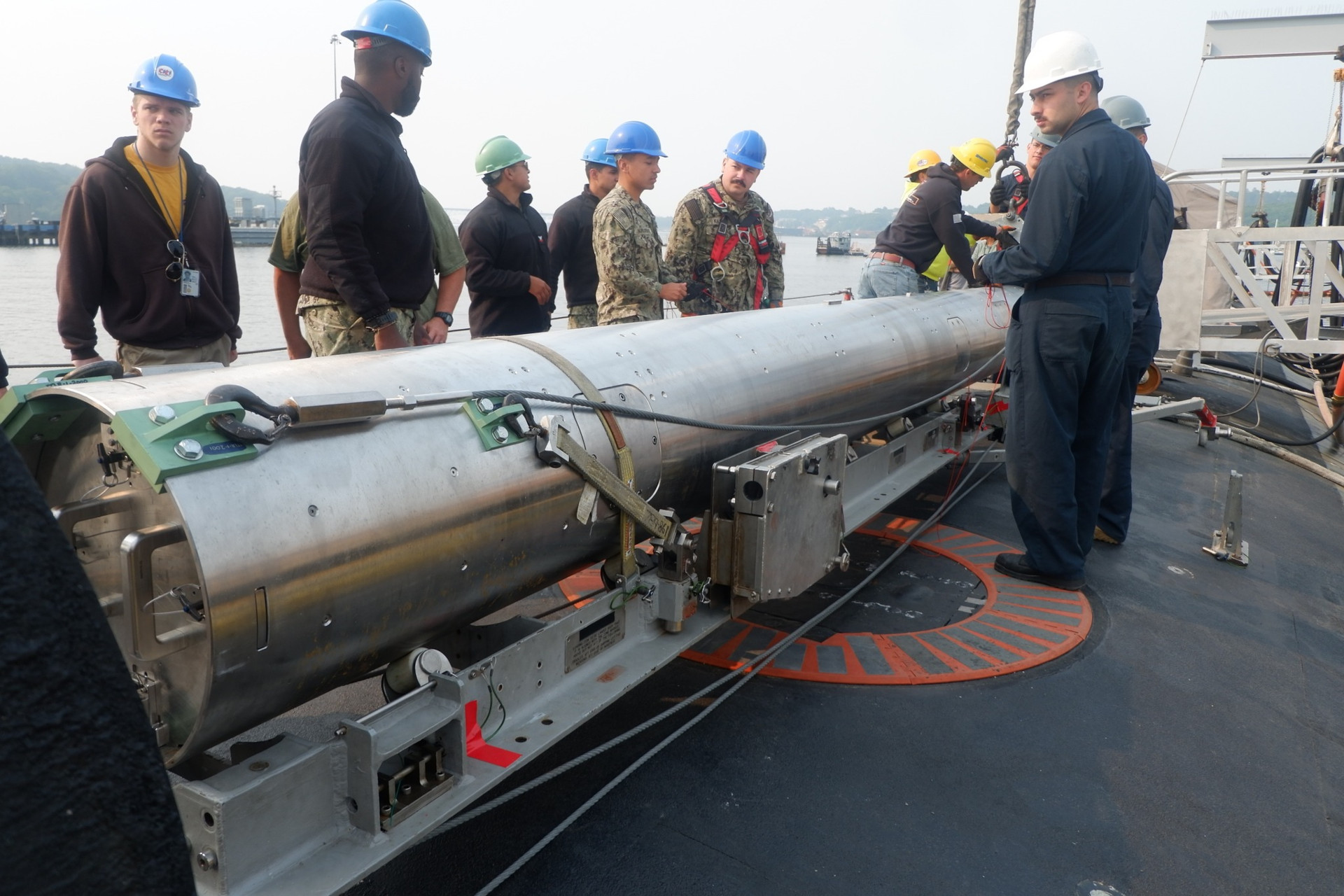
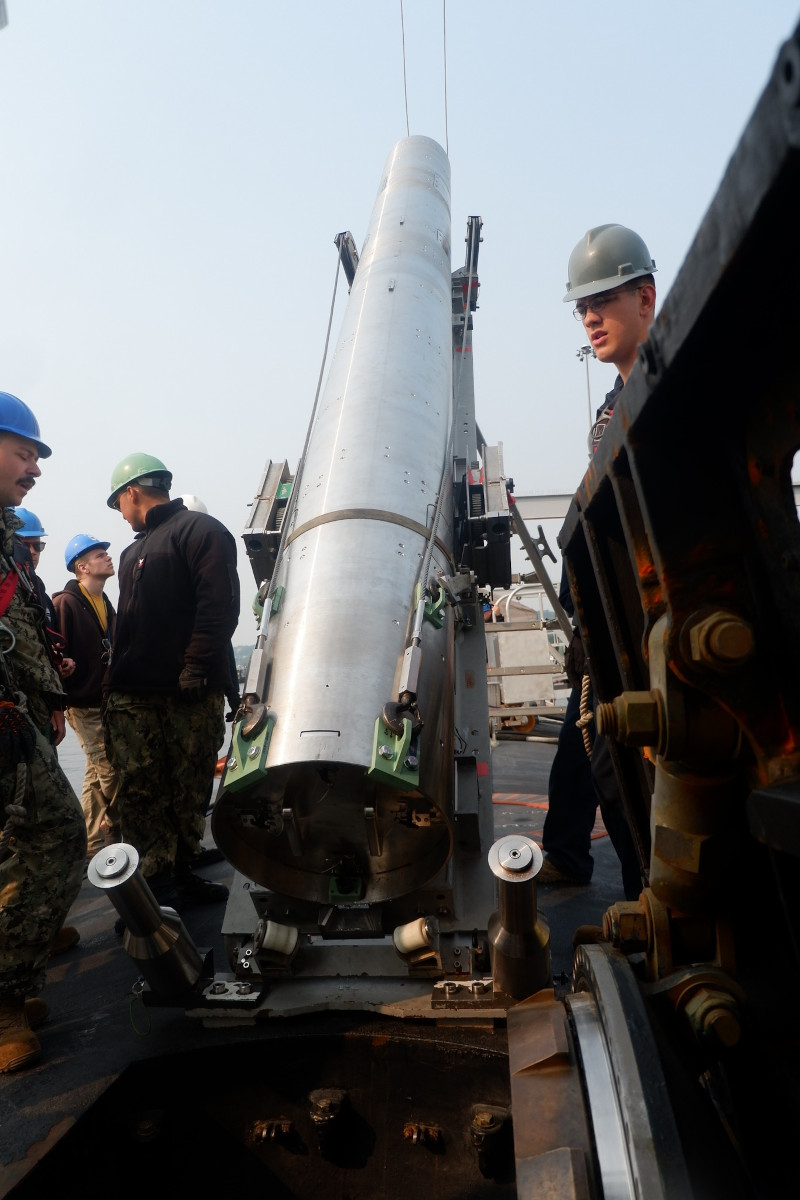
It’s not immediately clear exactly how Yellow Moray is launched and recovered, and whether divers are required as part of either procedure. The Navy has developed other torpedo-tube-launched drones, as well as ones that can be deployed via Dry Deck Shelter (DDS) or other means, but recovery has historically been a challenge. It’s also worth noting that the Navy canceled its Snakehead UUV program earlier this year in part because that design was too large to even work with existing DDSs.
Being able to launch and recover UUVs via torpedo tube offers much greater flexibility, overall. The Navy has a limited number of DDSs, which are primarily intended to be used to deploy and retrieve special operations forces, and only a select group of Virginia and Ohio class submarines are certified to carry them.
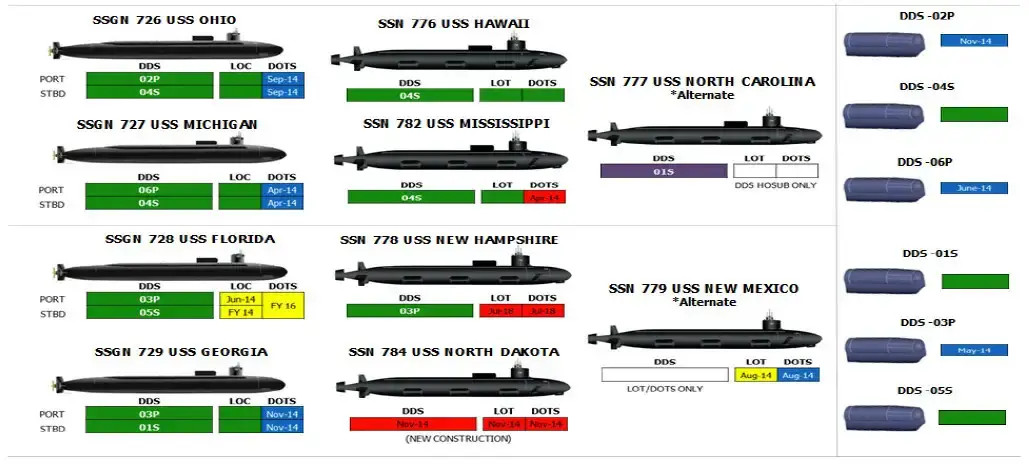
The four Ohio class guided missile submarines, or SSGNs, that are DDS-capable are also the only submarines in the Navy with the capacity to readily deploy UUVs, as well as aerial drones, via their large vertical launch tubes. Those boats are already highly in-demand specialized multi-mission platforms that typically carry around 100 Tomahawk land-attack cruise missiles, and can serve as special operations mother ships and underwater command and control and intelligence centers. You can read more about the Ohio SSGNs in detail in this past War Zone feature.
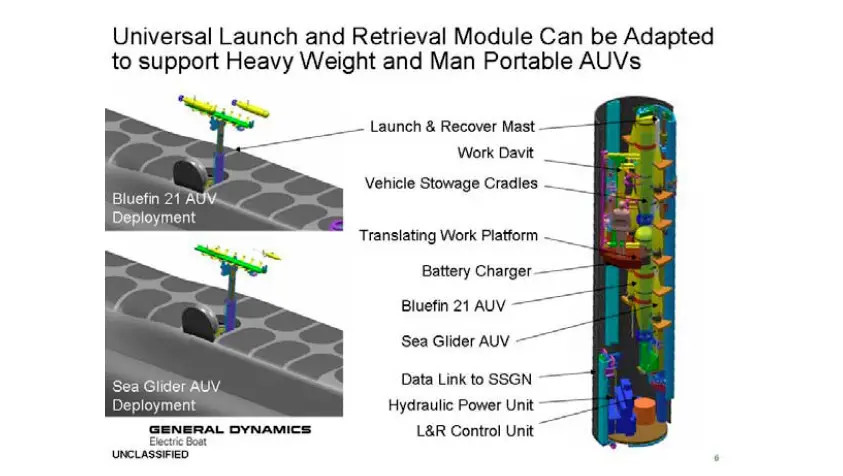
Block III and Block IV Virginia class submarines have two large vertical launch tubes in the bow that are typically loaded with Tomahawk cruise missiles, but that could potentially be adapted to launch UUVs and other payloads. Block V subvariants will have four additional large vertical launch tubes aft of the sail that are intended to be used for deploying a variety of payloads, including hypersonic missiles. However, the first of those boats is not expected to enter service until 2028.
The Navy is also exploring other Virginia class subvariants, as well as a future submarine design specifically to supplant the Ohio SSGNs, all of which could have baked-in UUV and other uncrewed capabilities. Still, those boats are years away from entering service.
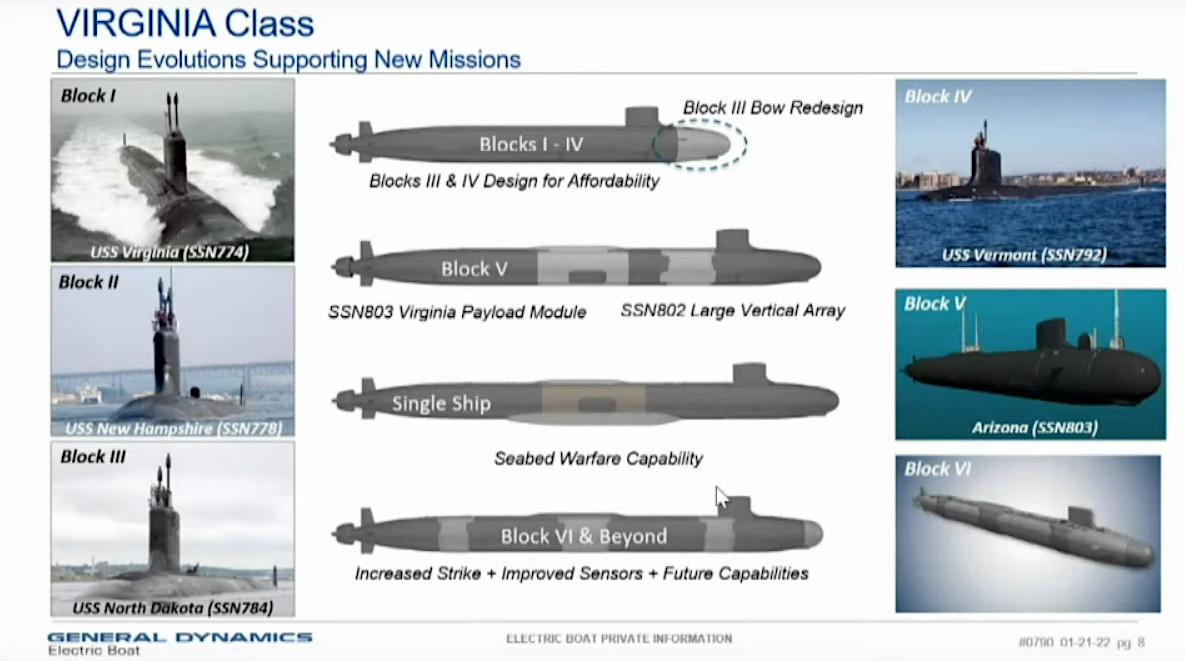
In the meantime, all the submarines the Navy has in service now, as well as each one it is planning to acquire in the future, have torpedo tubes that could be used to deploy and recover a UUV like Yellow Moray. An uncrewed capability like this could be very valuable to different types of submarines for different reasons.
Depending on their configuration, these UUVs might be able to help find enemy warships and submarines while keeping the boat that launched them further away from any potential danger and help them avoid detection. It could also be used to scout out for mines and hazards that might lie ahead, as well as investigate other underwater objects of interest depending on their depth. That kind of added situational awareness could be useful when trying to avoid potential threats, too.
With an endurance of 24 hours (or longer), Yellow Morays could potentially be sent out to collect intelligence of various kinds in denied or otherwise sensitive areas. They could be used to help conduct surveys of things like hostile ports or beach areas ahead of operations above or below the waves, too. Just having accurate underwater maps is critical for routine submarine operations in peacetime, too, as The War Zone has explored in the past.
The REMUS 600 is a highly modular design and the Yellow Moray could be adaptable to a wider array of roles, including acting as decoys. Using active acoustic emulators, they could stimulate enemy sensors and potentially draw threats away from the main body of friendly forces. Doing this could also provide additional opportunities to gather useful intelligence about an opponent’s capabilities and tactics, techniques, and procedures.
Altogether it’s not surprising that the Navy is pursuing a torpedo tube launchable and recoverable UUV capability, and has been for a while. The Navy started experimenting, at least publicly, with launching and recovering Razorbacks from submarines via DDS in 2015, according to a publication the Navy League, an independent organization, put together to mark USS Delaware‘s commissioning in 2020.
The video below gives a general sense of what it has historically taken to launch and recover large payloads from DDSs on Navy submarines.

“We’re currently fielding those vehicles for integration with the Dry Deck Shelter and we have plans to develop a torpedo tube-launched version of that in the near future,” Navy Capt. Peter Small, then the service’s program manager for UUVs and unmanned surface vehicles, had also said at the Naval Submarine League’s annual symposium in 2018.
“Submarine Force Atlantic conducted an effort called Yellow Moray, where it tested a Remus UUV from the defense contractor HII,” Navy Rear Adm. Robert Gaucher, a Special Assistant at U.S. Fleet Forces Command and nominee to become the service’s top submarine officer, told Defense News in November on the sidelines of the Naval Submarine League’s main annual conference.
The recent announcement about the successful end-to-end test of Yellow Moray from USS Delaware also noted that the Virginia class boats USS Indiana and USS Oregon had been involved in prior work related to this UUV.
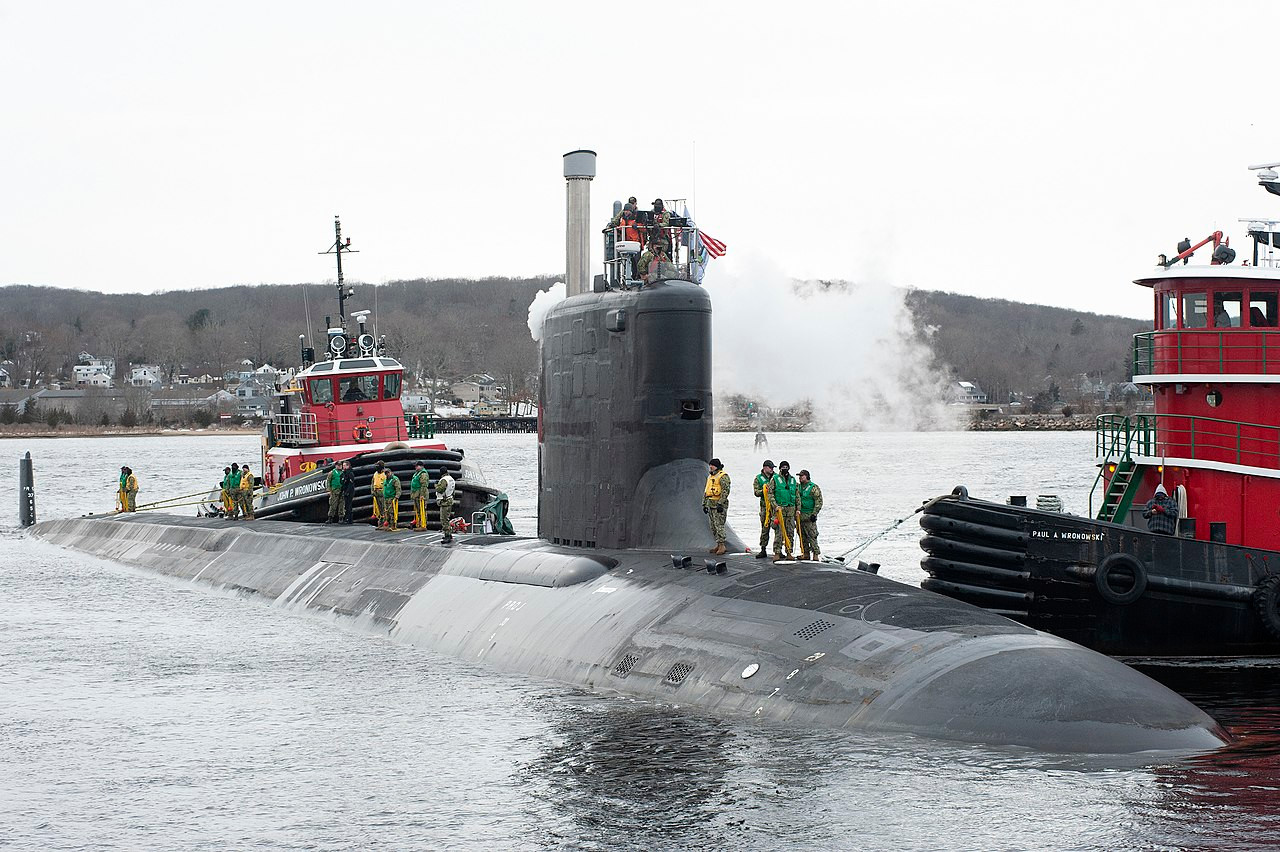
Yellow Moray is not the only such UUV the Navy is currently testing, either. “Submarine Force Pacific conducted a similar Rat Trap exercise, where it successfully launched and recovered an L3Harris-made UUV from a submarine torpedo tube,” according to Defense News.
“I think we are very close to deploying a torpedo tube-launched and -recovered UUV here within the next year,” Rear Adm. Gaucher had told Defense News last month. “So that’s going to be a big deal for us because success in that space is going to allow us to start operating at scale and putting these capabilities on every submarine.”
“There is a plan in place to deploy that in 2024,” Gaucher added. “Now, will we get there? We still have some testing to do, but that’s our plan and that’s what we’re shooting for.”
It is, of course, worth noting that Yellow Moray, as well as Rat Trap, represent Navy torpedo tube launchable and recoverable UUV efforts that we know about publicly. It is possible, if not probable that there have been and continue to be additional developments related to this kind of capability in the classified realm.
The Navy’s recent successful end-to-end test of Yellow Moray from USS Delaware puts the service one step closer to achieving this goal and providing an operational UUV capability that can be readily employed by any of its submarines.
Contact the author: joe@thedrive.com
